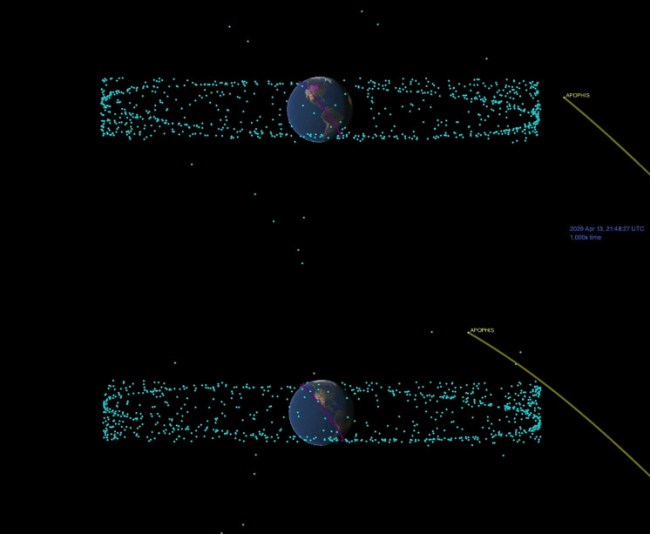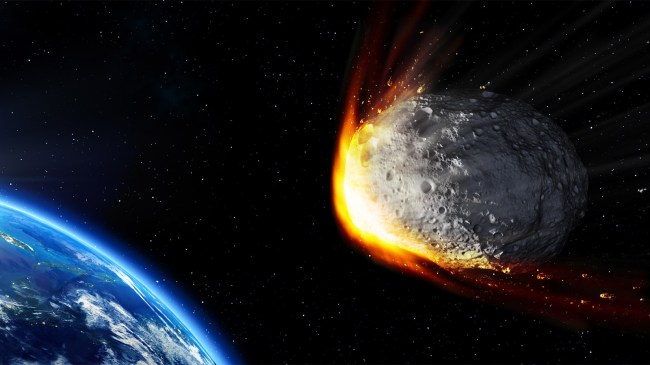iStockphoto
Asteroids regularly fly by Earth at tremendous rates of speed with little to no consequence.
A little over a week ago, a big one flew by at 21,000 mph and was knocked off its orbit by Earth’s gravity, but that’s usually the extent of it and not the norm.
Sure, it sounds ominous when a two-mile wide “planet killer” asteroid comes in close contact with Earth at 58,000 mph, but nothing bad ever seems to happen.
That, however, might not be the case with Asteroid 99942 Apophis, which has been nicknamed the “Colossal God of Chaos.”
Nearly 1,500 feet long, 99942 Apophis is expected to fly within less than 20,000 miles of Earth’s surface on April 13, 2029. To put that distance in perspective, most satellites in Earth’s orbit are around 22,000 miles from the planet.

NASA/JPL-Caltech
In 2019, NASA pegged the chances of Apophis (named after the Ancient Egyptian God of Chaos), categorized as a Potentially Hazardous Asteroid (PHA) because of its size and proximity to Earth, hitting our planet at 1 in 2.3 million.
Unfortunately, should the giant space rock unexpectedly make a beeline for Earth there isn’t much of anything we can do to stop it.
Which is why the European Space Agency (ESA) is working on a new mission names RAMSES (Rapid Apophis Mission for Space Safety) that will send a spacecraft to shadow Apophis as it passes by Earth in 2029.
“RAMSES will rendezvous with the Asteroid 99942 Apophis and accompany it through its safe but exceptionally close flyby of Earth in 2029,” ESA explained in a press release this week. “Researchers will study the asteroid as Earth’s gravity alters its physical characteristics. Their findings will improve our ability to defend our planet from any similar object found to be on a collision course in the future.”
Using a suite of scientific instruments, the spacecraft will conduct a thorough before-and-after survey of the asteroid’s shape, surface, orbit, rotation and orientation. By analysing how Apophis changes during the flyby, scientists will learn a lot about the response of an asteroid to external forces as well as asteroid composition, interior structure, cohesion, mass, density, and porosity.
These are all very important properties for assessing how best to knock a hazardous asteroid off a collision course with Earth. As asteroids are also time capsules formed over four billion years ago, data from Ramses will also offer new scientific insights into the formation and evolution of the Solar System.
While the “Colossal God of Chaos” is not suppsed to make any direct contact with Earth in 2029, the same can’t be said for 10 other dates in the future for which there is a calculable risk of deadly impact, according to NASA.

